This article needs additional citations for verification .(June 2014) |
The following are the basketball events of the year 1892 throughout the world.
Contents
| Years in basketball |
|---|
| See also |
This article needs additional citations for verification .(June 2014) |
The following are the basketball events of the year 1892 throughout the world.
| Years in basketball |
|---|
| See also |
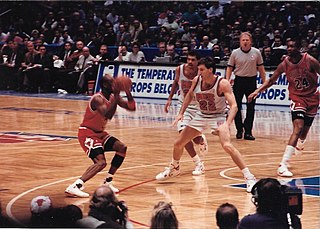
Basketball is a team sport in which two teams, most commonly of five players each, opposing one another on a rectangular court, compete with the primary objective of shooting a basketball through the defender's hoop, while preventing the opposing team from shooting through their own hoop. A field goal is worth two points, unless made from behind the three-point line, when it is worth three. After a foul, timed play stops and the player fouled or designated to shoot a technical foul is given one, two or three one-point free throws. The team with the most points at the end of the game wins, but if regulation play expires with the score tied, an additional period of play (overtime) is mandated.

James Naismith was a Canadian-American physical educator, physician, Christian chaplain, and sports coach, best known as the inventor of the game of basketball. After moving to the United States, he wrote the original basketball rule book and founded the University of Kansas basketball program in 1898. Naismith lived to see basketball adopted as an Olympic demonstration sport in 1904 and as an official event at the 1936 Summer Olympics in Berlin, as well as the birth of the National Invitation Tournament (1938) and the NCAA Tournament (1939).

YMCA, sometimes regionally called the Y, is a worldwide youth organization based in Geneva, Switzerland, with more than 64 million beneficiaries in 120 countries. It was founded in London on 6 June 1844 by George Williams as the Young Men's Christian Association. The organization aims to put Christian values into practice by developing a healthy body, mind, and spirit.

Springfield is the most populous city in and the seat of Hampden County, Massachusetts, United States. Springfield sits on the eastern bank of the Connecticut River near its confluence with three rivers: the western Westfield River, the eastern Chicopee River, and the eastern Mill River. At the 2020 census, the city's population was 155,929, making it the third most populous city in the U.S. state of Massachusetts and the fourth most populous city in New England after Boston, Worcester, and Providence. Metropolitan Springfield, as one of two metropolitan areas in Massachusetts, had a population of 699,162 in 2020.

1892 in sports describes the year's events in world sport.
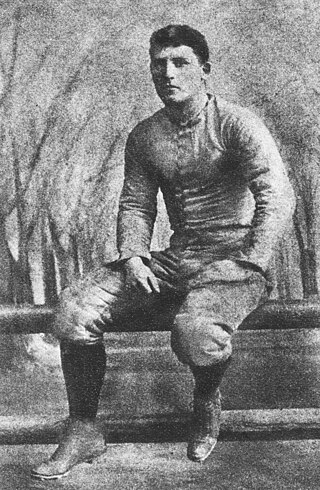
Amos Alonzo Stagg was an American athlete and college coach in multiple sports, primarily American football. He served as the head football coach at the International YMCA Training School (1890–1891), the University of Chicago (1892–1932), and the College of the Pacific (1933–1946), compiling a career college football record of 314–199–35 (.605). His undefeated Chicago Maroons teams of 1905 and 1913 were recognized as national champions. He was also the head basketball coach for one season at Chicago (1920–1921), and the Maroons' head baseball coach for twenty seasons.
Pope Francis Preparatory School is a Catholic co-educational college-preparatory high school in Springfield, Massachusetts.

Springfield College is a private university in Springfield, Massachusetts. The institution's philosophy, termed "humanics," underscores the importance of educating individuals in mind, body, and spirit to cultivate leadership abilities geared towards serving others. It is also notable for its historical significance as the birthplace of basketball, which was invented on campus in 1891 by Canadian-American instructor James Naismith.

Senda Berenson Abbott was a figure of women's basketball and the author of the first Basketball Guide for Women (1901–07). She was inducted into the Basketball Hall of Fame as a contributor on July 1, 1985, the International Jewish Sports Hall of Fame in 1987, and the Women's Basketball Hall of Fame in 1999.
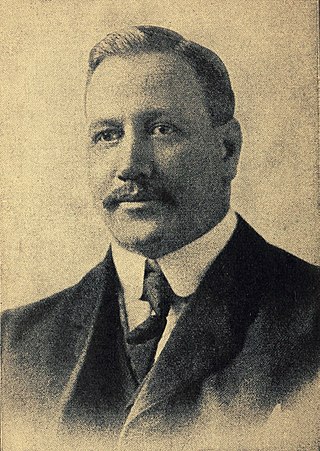
William George Morgan was the inventor of volleyball, originally called "Mintonette", a name derived from the game of badminton which he later agreed to change to better reflect the nature of the sport. He was born in Lockport, New York, U.S.
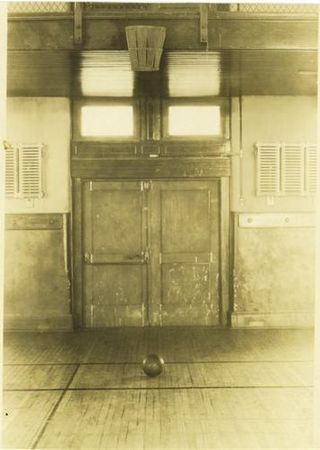
The First Team were the first players known to have played the sport of basketball, having been taught the game in 1891 by James Naismith, who is recognized as the inventor of the sport. The team comprised 18 players who were studying in Springfield, Massachusetts, to become executive secretaries of the YMCA and who, as part of their coursework, studied physical education with Naismith, who is said to have invented the game to teach teamwork skills to his charges. The team was inducted as a group into the Naismith Memorial Basketball Hall of Fame as part of that organization's inaugural 1959 induction class for their efforts in popularizing the sport and as the game's first practitioners.
Basketball has a very long history in England, being introduced there by YMCA almost immediately after it was invented. World Wars I and II further spurred its popularity.

Rudolph H. Lavik was an American football, basketball, baseball, and track and field coach, college athletics administrator, and educator. He served as the head football coach at Concordia College in Moorhead, Minnesota from 1920 to 1921, at Arizona State Teacher's College of Flagstaff—now known as Northern Arizona University—from 1927 to 1932, and at Arizona State Teachers College at Tempe—now known as Arizona State University—from 1933 to 1937, compiling a career college football head coaching record of 43–43–9. Lavik was also the head basketball coach at Arizona State Flagstaff (1927–1931), Colorado Agricultural College—now known as Colorado State University (1925–1927), and Arizona State Tempe, tallying a career college basketball head coaching mark of 152–156. In addition, he served as the athletic director at Northern Arizona from 1927 to 1933 and Arizona State from 1933 to 1949. He remained a full-time member of Arizona State's faculty until 1962.
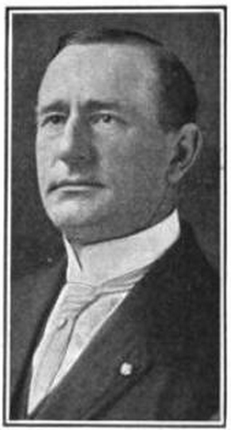
Charles Otis Bemies was an American football, basketball, and baseball coach and Presbyterian minister. He became acquainted with James Naismith while studying at Springfield College in the late 1880s. While serving as the athletic director at Geneva College, he organized the first college basketball team in 1892. He graduated from the Western Theological Seminary and was ordained as a Presbyterian minister in 1897. From 1899 to 1901, he served as the first basketball and second football coach at Michigan Agricultural College. After retiring from coaching, Bemies served for many years as a Presbyterian minister and evangelist in rural Pennsylvania. He was also active with YMCA, serving with that organization in Russia in 1918 and in South Dakota in the early 1920s. Bemies lived in Minneapolis, Minnesota, in his later years and died there in 1948. He was posthumously inducted into the Beaver County Hall of Fame in 1992.

Basketball began with its invention in 1891 in Springfield, Massachusetts, by Canadian physical education instructor James Naismith as a less injury-prone sport than football. Naismith was a 31-year-old graduate student when he created the indoor sport to keep athletes indoors during the winters. The game became established fairly quickly and grew very popular as the 20th century progressed, first in America and then in other parts of the world. After basketball became established in American colleges, the professional game followed. The American National Basketball Association (NBA), established in 1946, grew to a multibillion-dollar enterprise by the end of the century, and basketball became an integral part of American culture.
Events from the year 1892 in the United States.

The 1892 Yale Bulldogs football team represented Yale University in the 1892 college football season. In its fifth and final season under head coach Walter Camp, the team finished with a 13–0 record and outscored opponents by a total of 429 to 0. Mike Murphy was the team's trainer. The team is regarded as the 1892 national champion, having been selected retrospectively as such by the Billingsley Report, Helms Athletic Foundation, Houlgate System, National Championship Foundation, and Parke H. Davis. Yale's 1892 season was part of a 37-game winning streak that began with the final game of the 1890 season and stopped at the end of the 1893 season.

The 1910–11 North Carolina Tar Heels men's basketball team was the first varsity college basketball team to represent the University of North Carolina. The school created a committee to determine if the school should go forward with forming a team as there was increasing pressure from students, the student run newspaper The Tar Heel, in-state schools that fielded teams who wanted to form a state league, and the University of Tennessee inquired about scheduling a game in February 1911. Equipment was purchased and installed at Bynum Gymnasium after a period of uncertainty of where the team would play its home games. Then track-and-field head coach Nathaniel Cartmell – who had little experience with basketball – was chosen to coach as there were no funds to be allocated for hiring another coach. After choosing players for the first team, Cartmell finalized the schedule in January, which was limited as many other programs had already created their schedules before the Tar Heels made their team.
The 1891 Springfield YMCA football team, also known as the Christian Workers and the Staggs, was an American football team that represented the International Young Men's Christian Association Training School—now known as Springfield College–as an independent during the 1891 college football season. Led by Amos Alonzo Stagg in his second and final season as head coach, the team compiled a record of 5–8–1. Stagg also played for the team at fullback and halfback. Springfield YMCA played their home games at Outing Park in Springfield, Massachusetts.
The 1920–21 YMCA College Maroons men's ice hockey season was the 17th season of play for the program.